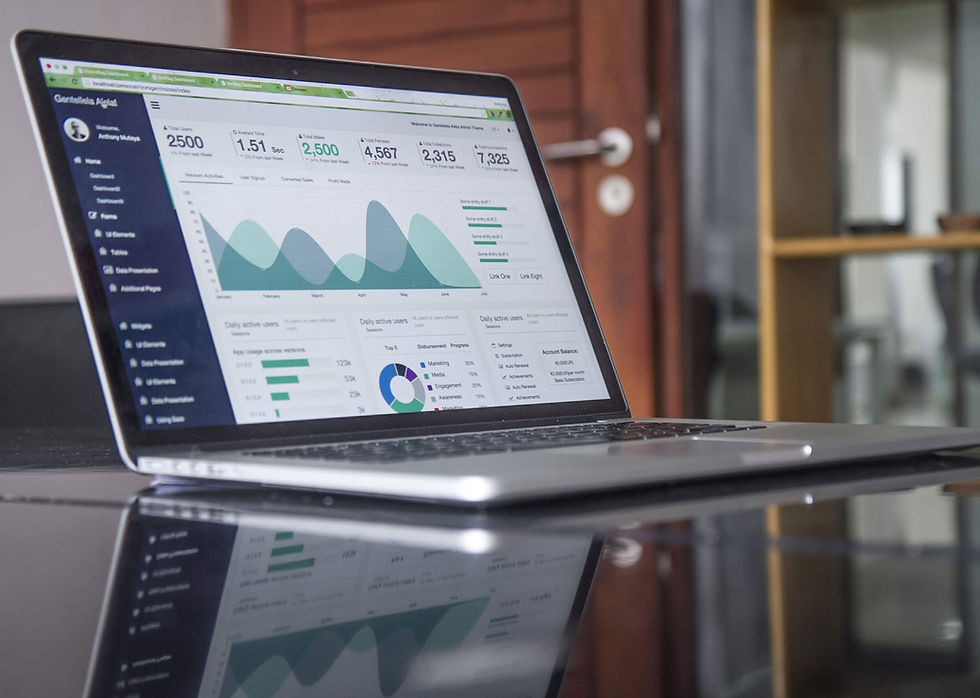Update to modern agile resource planning tools
- Carsten Ley

- Aug 12
- 3 min read
Updated: Oct 10
Project Management Offices (PMOs) often face the challenge of outdated resource planning methods that struggle to meet today's dynamic demand. Modern agile resource planning tools provide the flexibility, visibility and control you need.
In today's fast-paced business landscape, Project Management Offices (PMOs) are pivotal in ensuring successful project delivery and strategic alignment within organizations. However, many PMOs are grappling with the challenge of outdated resource planning methods that fail to meet the dynamic demands of modern projects.
Traditional waterfall tools and processes
Traditional tools and processes, while once effective, often fall short of providing the agility and insights necessary to manage resources efficiently in a rapidly changing environment. This gap can lead to resource bottlenecks, scope creep, and ultimately, project delays or cancellations, undermining the value that PMOs are expected to deliver.
The crux of the issue lies in the lack of real-time visibility and control over resources. Many organizations still rely on spreadsheets or legacy systems that do not provide a holistic view of resource allocation or real-time updates on availability. This can result in poor decision-making, as project managers may not have access to the most current data when planning or reallocating resources. In a dynamic environment where project priorities shift and new opportunities can arise quickly, the ability to swiftly adapt resource plans is crucial. Without this capability, PMOs risk falling behind, unable to respond effectively to the business's strategic needs.
Modern agile resource planning tools
To address these challenges, many organizations are considering a transition to more modern, robust resource planning tools. These contemporary systems offer enhanced functionalities such as real-time resource tracking, predictive analytics, and more sophisticated dashboards that provide comprehensive insights into resource usage. By leveraging these advanced tools, PMOs can improve their capacity to forecast resource needs accurately, align resources more closely with strategic goals, and enhance their overall project management capabilities. This transformation not only supports more efficient project execution but also empowers PMOs to take a proactive role in strategic decision-making.
Examples of modern and agile PMO resource tools:
These tools focus on flexibility, collaboration, and real-time insights. Here are some examples, categorized by their main function:
Resource Management & Planning:
Planview Enterprise One: Comprehensive PPM solution for strategic planning, resource capacity planning, and project execution. It offers portfolio optimization and resource demand management.
Asana: Project management tool that allows for task assignment, progress tracking, and communication. It's useful for managing resources across multiple projects and teams.
Monday.com: Customizable work OS that can be used for resource allocation, workload visualization, and tracking project progress. It offers integrations with other tools.
Smartsheet: Spreadsheet-based work management tool with features for resource allocation, project scheduling, and collaboration. It provides a visual way to manage resources and projects.
Resource Guru: Resource scheduling tool focused on booking resources and managing their availability. It offers features for conflict resolution and capacity planning.
Collaboration & Communication:
Microsoft Teams: Communication platform for teams that includes chat, video conferencing, and file sharing. It helps teams collaborate and communicate effectively.
Slack: Messaging app for teams that allows for real-time communication, file sharing, and integrations with other tools. It helps teams stay connected and informed.
Jira: Project tracking tool commonly used in agile environments for bug tracking, issue tracking, and project management. It supports collaboration and communication among team members.
Reporting & Analytics:
Tableau: Data visualization tool for creating interactive dashboards and reports. It helps PMOs analyze resource data and track key metrics.
Power BI: Business analytics service from Microsoft that provides interactive visualizations and business intelligence capabilities. It helps PMOs monitor resource utilization and project performance.

Key Considerations When Choosing a Tool:
Integration: Does the tool integrate with your existing systems?
Scalability: Can the tool scale to meet the needs of your PMO as it grows?
User-Friendliness: Is the tool easy to use and adopt by team members?
Reporting Capabilities: Does the tool offer the reporting and analytics features you need?
Cost: What is the total cost of ownership, including licensing, implementation, and training?
By considering these factors, PMOs can select the right resource tools to support their agile project management practices and improve resource utilization.
Summary
In conclusion, the landscape of project management is evolving, and PMOs must adapt to maintain their relevance and effectiveness. By moving away from outdated methods and embracing new, innovative resource planning tools and techniques, PMOs can achieve the visibility and control necessary to thrive in today's dynamic environment. This shift is not just about keeping pace with technological advancements; it's about transforming the PMO into a strategic asset that drives organizational success through optimized resource management and project delivery.
For more information how to implement OKRs successfully please contact us on transform@asiapmo.com or on our contact form.




Comments